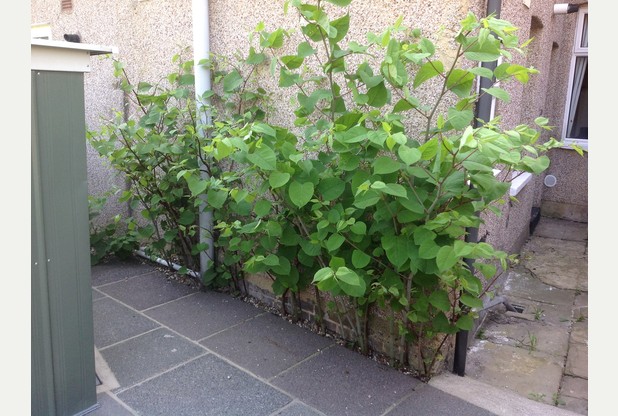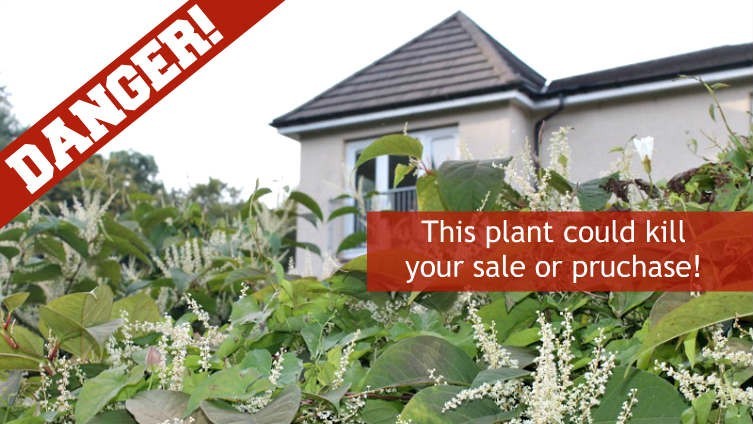The Perils of Japanese Knotweed
In this month's Bailgate Independent magazine Alastair Boulton highlighted the potential dangers of Japanese Knotweed for homeowners and purchasers alike.
Japanese Knotweed has become an increasingly high profile topic in recent years. With a general reluctance from lenders to lend on Japanese Knotweed affected properties, the fact that most home insurance policies do not cover damage or problems caaused by Japanese Knotweed and a number of high profile media reports of home owners faced with horrifically expensive repair bills, home owners and purchasers are correct to be wary.
So what is Japanese Knotweed and why is it such a problem?
Fallonia Japonica is a large bamboo like perennial plant that was imported into the UK from Japan in the mid 19th Century. It is extremely fast growing, very hard to eradicate and is able to grow through most structures including concrete, meaning that it is able to cause severe damage. Thankfully the most extreme problems are somewhat rare and when it comes to residential properties the most common effects and affected areas are:
- The disruption of drains which in the worst cases can lead to the need to renew them.
- The disruption of paths, patios and driveways, leading to the need to take them up together with the bedding material and relay.
- Damage to boundary and retaining walls leading to their collapse.
- The overwhelming of lightweight, insubstantial and poorly founded garden outbuildings such as sheds and greenhouses.
- Signficant damage to conservatories.
- And finally the invasive nature of the plant can over run well landscaped and stocked gardens.
How do you identify Japanese Knotweed?
Japanese Knotweed goes through a yearly lifecycle, which can make identification tricky. Early in the year (March-April) it can be identified by small red/purple shoots or ‘spears,’ which can be seen growing among the tall stems of the previous year’s growth. Later on (May-June) once the leaves have unfurled they are identifiable by their heart shape with a flattened base and lush green colour. The main stems are initially green but develop distinctive purple speckles. Later in the year still (July-August) where uninhibited the plant will grow in tightly packed clumps or ‘stands’. The leaves alternate in zig-zag pattern along the stem and spikes of small creamy white flowers are present when in bloom (September-October). In the winter the leaves fall off as the plant turns orange/brown before eventually the stems peel leaving them a pale straw colour.
How do you eradicate Japanese Knotweed?
There are a number of different methods by which to remove it. Perhaps the most comprehensive treatment for Japanese Knotweed is the excavation of the plant and its roots. Unfortunately however, the volume of excavated soils can extend to up to 3m below and 7m around the above ground growth. Coupled with the fact that the soil will need to be placed within a barrier and transported to an appropriately licensed waste management facility, this often means that it is a prohibitively costly and intrusive option. In a residential setting where space is limited and boundaries are closely situated planned and managed chemical treatment is often the most suitable option. This involves applying specialist herbicides to the plant to slowly kill it, generally over several years. This is far less intrusive and more economical than excavation. As a guide this may still cost between £2000 and £5000 for a typical residential property, which does not include any repairs to the property itself. The cost of removal is a strong reason to instruct a pre-purchase survey report by a Chartered Surveyor when purchasing a property.
Please click on the link at the top right-hand side of page in order to download this article for future reference. If you spot this aggressive plant in a garden or growing through your concrete driveway, be aware that it could cost you dear when buying or selling a home.
If you are in the process of purchasing a new home and would benefit from an RICS Home Survey please do not hesitate in contacting me directly for advice. I would be only too pleased to discuss the various different survey options available, to ensure that you choose the correct one and can then go our and buyer your new home in confidence.
Alastair Boulton MRICS
Surveys & Valuations
Horncastle & Lincoln Office
Email:alastairboulton@robert-bell.org
Tel: 01522 538888
Twitter: @robertbellandco


